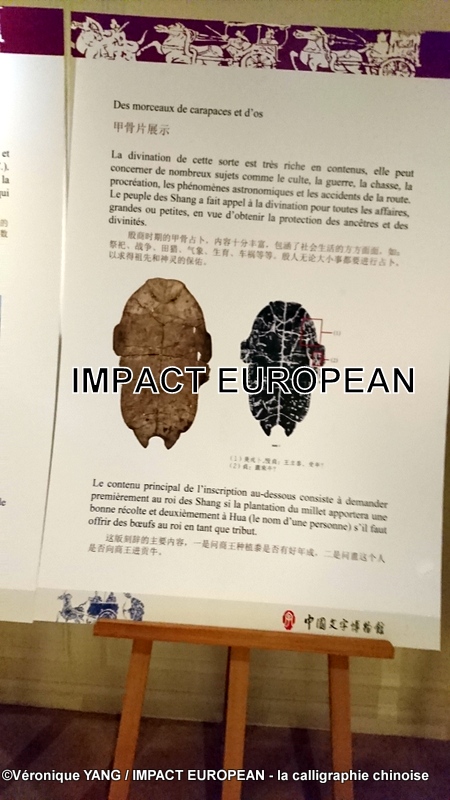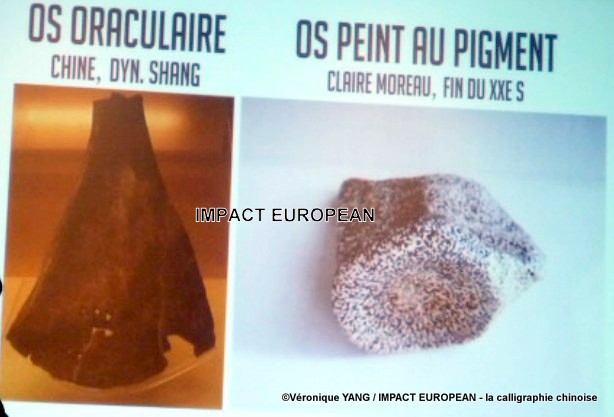The exhibition « The Silk Roads: Travel through Chinese Characters » will take place in Lyon at the Palais de la Bourse from September 20 to 22.
On August 28, 2012, a conference on the upcoming exhibition « The Silk Roads: Travel through Chinese Characters » was held in Paris at the Inter Continental Paris Le Grand Hotel in the presence of Chinese guests, government representatives and the press from the two countries.
The year 2019 marks a quadruple commemoration, celebrating the 55th anniversary of the establishment of Sino-French diplomatic relations (late March with President Xi Jinping’s visit), the 70th anniversary of the People’s Republic of China (October 1), the 100th anniversary of the Mouvement Travail-études en France (end March) and the 120th anniversary of the discovery of jiaguwen oraculate inscriptions in Anyang in Henan province.
On this occasion, the Chinese Scripture Museum, the Henan International Communications Office, the Henan Overseas Chinese Federation returning to China, Anyang City Hall, the Economics Journal, the Art and Design Magazine, HAIYAO Holdings and the Foreign Language Department of Tongji University worked together to set up this exhibition linking culture and technology, tradition and fashion, art and design. Through this exhibition, the passionate French audience of Chinese culture will be able to discover the Chinese characters, a thousand-year-old treasure, and answer questions about what these traits represent and learn about the oldest hieroglyphs, such as « 山« , » 川, « 日« and « 月« .
With the longest continuous tradition of an unchanging way of writing from high antiquity to the present, China has a writing that has played an important role in the millennial evolution and transmission of Chinese civilization since the oracle appeared about 4,000 years ago, or about 2,000 years after the invention of Mesopotamia’s cuneiforms; however, Chinese characters are the only ancient script to be broadcast and used up to the present day, including in Japan, North Korea, Vietnam,(…) or in more than 30 languages.
The sinograms date from 4,000 to 5,000 years (from the 15th century BC). The country’s economic development through the « Silk Roads » and since 2013 the « New Silk Roads » project has enabled the expansion of Chinese language practice in 170 countries. The goal is to connect the « Middle Kingdom » directly to all the areas and countries needed for its national interest and economic development. The creation of real economic corridors to its European (land), Arab and African (maritime) trading partners will enable the control of new communication routes through the construction of numerous infrastructure (roads, railways, airports, ports) and energy networks (pipeline, pipeline, electricity) in all the countries crossed. The influence of other counter-China powers, such as the US, will be thwarted.
Funding for this project will be provided through the new Asian Infrastructure Investment Bank (AIIB), which was established in 2015 on a Chinese initiative. With more than $100 billion, it is expected to allocate more than $15 billion each year on a cruise (2017: $3.5 billion). In addition, there are other funds, including the $40 billion Silk Road Company Ltd and those that could be mobilized by the emerging New BRICS Development Bank (Brazil, Russia, India, China, South Africa). In 2017, Fitch Ratings rated the number of projects planned or under way at over $900 billion.
The chronological exhibition will begin with the discovery of divinatory inscriptions engraved on bones or on tortoise scales and will continue with a selection of pieces showing the evolution of Chinese characters throughout history, until their development in the digital age. It will highlight the decorative quality of Chinese characters and the messages they convey, which can be found on printed silk scarves (oraculate motifs), inspired by emoticômes or pictogram-shaped sweets.
It all started in 1899 with Wang Yirong’s discovery of the first fragments of inscriptions on Oracle bone (jiaguwen bone writing) among the tens of thousands extracted from the site in the Yin Xu ruins in Anyang. These were the archeological records dating back to the posterior era of the Shang Dynasty (from the 14th to the 11th century BC), and which showed the oldest use of Chinese writing.dating back over 3,600 years. The archeological site of Yin Xu in Anyang (« Chinese Pompei ») has been inscribed on the UNESCO World Cultural Heritage List and Chinese inscriptions on Oracle bone (the jiaguwen) in the Memory of the World Register.
In 1999, the creation of the « Digitalization of Jiaguwen Design » and the concept of the « Rime of Design » began following the presentation of the characters by Chen Nan, professor at the Academy of Fine Arts of Tsinghua University, In 2017, the first bases of jiaguwen design revealed the beauty of the mathematical grid of the latter.
A total of 154,600 oracle bones have been discovered in the world, of which 127,900 are found in China, the majority of which are in mainland China (96,000) and Taiwan (30,200), and less than 100 in Hong Kong. The remainder (26,700) was collected in Japan, Canada, the United Kingdom and the United States.
Today, 2,000 of the 4,500 words on bone have been translated and research is underway. Recently, in order to advance the process, the « National Museum of Chinese Writing » launched an open-ended program to collect as many interpretations of the jiaguwen in China and overseas as possible, with a prize of 100,000 yuan for each derived word, with each Chinese character hiding a story.
This exhibition evokes not only the history of Chinese writing but also the culture of the country through the body, mountains and rivers, agriculture and harvesting, wine and meat, tools and weapons. It will be presented at the Palais de la Bourse (69002) in Lyon, a city in the heart of Fort Saint-Irénée (69005), the New Franco-Chinese Institute created in 2014 following the Franco-Chinese Institute, which welcomed nearly 500 Chinese students from 1922 From 1 to 1946 in Lyon, a unique feature at the time and which also houses a space dedicated to Chinese contemporary art since 2016. Each year, 3 temporary exhibitions follow one another. The artists, chosen in China in partnership with the Beijing Art House x2D Yishu8, are invited to Lyon as part of an art residence, and then present a 3 or 4 month exhibition.
In the same vein, the city hall of the 13th arrondissement organizes the Chinese Character Festival from September 10 to 14, where young and old can discover Chinese writing and its characters through conferences, round tables, exhibitions and practical workshops.
Views: 0

























Plus d'histoires
Agricultural crisis: farmers bring protests to Paris over EU–Mercosur deal
In Paris, Ukraine and Its Allies Seal Security Guarantees for a Lasting Peace
Arrest of Nicolás Maduro: U.S. Justification, Global Reactions, and Accusations of Double Standards in International Law